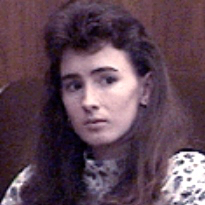Rascals case in brief
In the beginning, in 1989, more than 90 children at the Little Rascals Day Care Center in Edenton, North Carolina, accused a total of 20 adults with 429 instances of sexual abuse over a three-year period. It may have all begun with one parent’s complaint about punishment given her child.
Among the alleged perpetrators: the sheriff and mayor. But prosecutors would charge only Robin Byrum, Darlene Harris, Elizabeth “Betsy” Kelly, Robert “Bob” Kelly, Willard Scott Privott, Shelley Stone and Dawn Wilson – the Edenton 7.
Along with sodomy and beatings, allegations included a baby killed with a handgun, a child being hung upside down from a tree and being set on fire and countless other fantastic incidents involving spaceships, hot air balloons, pirate ships and trained sharks.
By the time prosecutors dropped the last charges in 1997, Little Rascals had become North Carolina’s longest and most costly criminal trial. Prosecutors kept defendants jailed in hopes at least one would turn against their supposed co-conspirators. Remarkably, none did. Another shameful record: Five defendants had to wait longer to face their accusers in court than anyone else in North Carolina history.
Between 1991 and 1997, Ofra Bikel produced three extraordinary episodes on the Little Rascals case for the PBS series “Frontline.” Although “Innocence Lost” did not deter prosecutors, it exposed their tactics and fostered nationwide skepticism and dismay.
With each passing year, the absurdity of the Little Rascals charges has become more obvious. But no admission of error has ever come from prosecutors, police, interviewers or parents. This site is devoted to the issues raised by this case.
On Facebook
Click for earlier Facebook posts archived on this site
Click to go to
Today’s random selection from the Little Rascals Day Care archives….
Click for earlier Facebook posts archived on this site
Click to go to
Today’s random selection from the Little Rascals Day Care archives….
Why have historians overlooked day-care mania?
 July 27, 2012
July 27, 2012
“It has always intrigued me that, in a culture that is relentlessly self-critical… the pre-school hysteria and witch-hunts of the 1980s and ’90s (have) attracted little, if any, notice among historians and social analysts.
“Which is odd: We moderns like to think that we are exempt from some of the baser instincts of human nature, but hysteria, mob rule, and spectral fears are still very much with us.
“Moreover, in this instance, the American judicial system failed systematically, blighting hundreds of lives: Many more genuinely innocent people went to prison, and for longer terms, than any Communist during the McCarthy era.”
– From “Remember McMartin” by Philip Terzian in the Weekly Standard (Nov. 11, 2011)
Robin Byrum, youngest of Edenton Seven, recalls brutality at hands of prosecution

PBS
Robin Byrum in 1997
April 29, 2017
Robin Byrum, not long out of high school and pregnant with her first child, went to work at Little Rascals Day Care Center in September 1988. A year later she was in prison under $500,000 bond, charged with 23 counts of child sex abuse. Prosecutors had no credible evidence against her, but they were betting the youngest defendant would implicate Bob Kelly and the others accused.
“I was in the wrong place at the wrong time,” she recalls today in her first interview since charges finally were dropped against her in 1996. “They thought I would tell on the others. That was the only reason I was swept up.”
Now 15 years into her second marriage, she lives in Eastern North Carolina. For her privacy I’m not mentioning her town or married name. “I’ve gone on with my life. It’s turned out well, in spite of all that….”
——-
After months of sporadic questioning she was arrested in January 1990. “Three men from the SBI came to my mother’s house. It was so frightening. They intimidated me. One of them put his foot up on the table and I could see the gun in his ankle holster. He said, ‘I’d hate to see you taken away from that child.’
“Then we went to the police station in Edenton. [SBI agent] Kevin McGinnis said he would give me one more chance to talk. I could hear my baby crying in the next room. When I told him again I didn’t know anything, he was so angry he kicked the desk across the room.”
Along with Betsy Kelly and Dawn Wilson, she was put in a cell in women’s prison in Raleigh. “I was three hours from my only family in North Carolina. Strip-searched before and after every visit.
“They put another prisoner in there with us, a snitch, thinking she could get us to talk. But we had nothing to tell….. One day they even tossed our cell, looking for ‘satanic’ passages marked in our Bibles.”
As the months passed, prosecutors offered Byrum ever more tempting plea deals. In a particularly poignant moment in “Innocence Lost: The Plea” (1997) she explains to Ofra Bikel why she had even turned down a deal offering no active time, but an admission of guilt: “‘That would mean knowing I would not ever have to be separated from my child again. But then I’d have to live with the rest of my life that I [said I] did something when I didn’t do it.’”
In 1990, bond was reduced to a still absurd $200,000 and her grandparents and two aunts in Kentucky managed to pay in time to get her home for Christmas.
Today Byrum, 46, works in health information management. “My office manager knew about the case, but the doctors hadn’t put two and two together until they went to your site. One of them shook his head and said, ‘How did seven people go to prison on something completely unfounded?’ Well, I’m still baffled too….
“How could anyone believe all these things happened? We were a block from downtown, in a building with huge windows and no curtains. Parents walked their 2- and 3-year-olds there, and they dropped by all the time….
“Didn’t a light bulb ever once come on that made somebody use their common sense?”
![]()
Convicting an innocent man sure works up an appetite

Mills
May 26, 2018
“It’s one of the most telling shots in Ofra Bikel’s painstaking investigation into the Little Rascals child-abuse scandal in small-town North Carolina: As a convicted perpetrator [Bob Kelly] is taken away in a police car, children frolic nearby and chant, ‘I hate you, I hate you’, as their parents applaud and one adult says, ‘Let’s go get something to eat.’ ”
– From “Justice Abuse? `Frontline’ Documentary Takes Hard Look At A Small-town Scandal” by Bart Mills in the Chicago Tribune (July 20, 1993)
![]()
Kelly used hard work to survive hard time
Oct. 21, 2011
How would you handle six years behind bars after being wrongfully convicted? Here’s how Bob Kelly did it:
 “In jail (in Chowan County before being found guilty) there was nothing but sitting and waiting. Central Prison was easier – I could work.
“In jail (in Chowan County before being found guilty) there was nothing but sitting and waiting. Central Prison was easier – I could work.
“A warden told me, ‘Whoever kills Bob Kelly will have a trophy. I can put you in lockup, where you’ll be safe.’ But that would’ve meant spending 23 hours a day in a cell. I said, ‘Put me in the general population. I’ve got 12 life sentences, and I’m not going to do my time hiding.’
“But I tried to be smart. It was two years before I went outside in the yard. All I could think of was, if I got in a fight, how would that affect the appellate court?… Only one time did a jailhouse gangster lay his hands on me, and I realized I had to stand up to him to keep it from happening again….
“My first job was janitor in G block. I waxed the floor, emptied the trash, kept it like my home. They don’t allow bleach, because it would get thrown in the guards’ eyes, but I managed to talk a guy in the laundry room out of a bottle. It was great for spraying down the showers. My block was the only one in the whole prison that smelled like Clorox….
“My next job was running the canteen for lockup. The guys who had been there before me had watered down the Cokes and coffee and pocketed the difference. I wanted to run the best canteen I could, so I started giving full measure….
“You know what the other prisoners said? ‘You’re stupid – don’t you know you could be making money?”











0 CommentsComment on Facebook